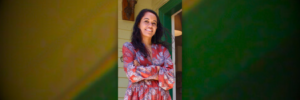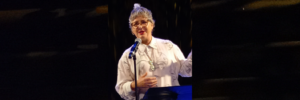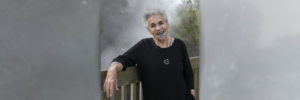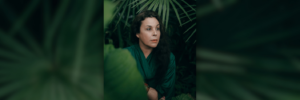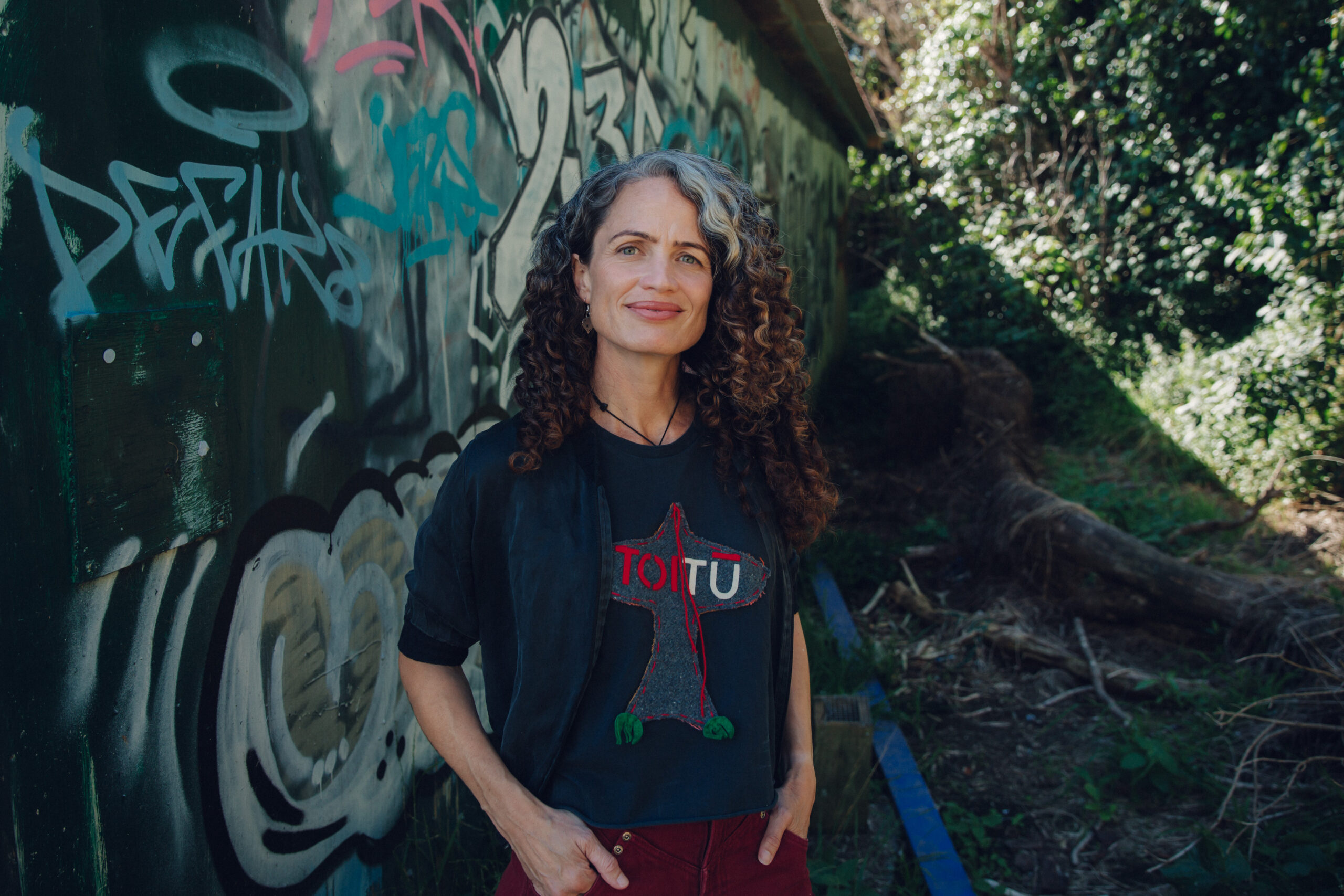
Nadine Hura (Ngāpuhi, Ngāti Hine) is a poet, essayist, and zine maker based in Porirua. She writes the blog Iti te Kupu, and her stories appear in The Spinoff, e-Tangata, Pantograph Punch, and a range of anthologies. She is one of the Co-chairs of Te Hā Māori o Ngā Pou, and a member of the independent publishing collective, Taraheke. She has a prolific following online, publishing regularly via Social Media and Substack. She has frequently been a Pikihuia Awards finalist and in 2023 she won the Non-Fiction English category. She has just launched her long-awaited, debut full-length pukapuka Slowing the Sun (BWB).
Congratulations e hoa on the recent release of Slowing the Sun. Sometimes writers talk about their book as if it is something they’ve birthed a struggle as well as a gift. If you were to think of your book this way, who are its whanaunga?
I love the diversity of answers people have given in response to this pātai. For me, it’s a question of whakapapa, so of course it’s the right place to begin. The extended answer is in the acknowledgements of the book, which is embarrassingly over 2000 words, but fuckit, it’s important to mihi to people.
I won’t repeat the full acknowledgements, but I want to mention a few key people who were there at the beginning: Stacey Morrison, who introduced me to the editors of E-Tangata, Tapu Misa and Gary Wilson, at a time when there weren’t many mainstream platforms regularly publishing Māori writers, let alone unknown ones. That led to so many opportunities, including Te Papa Tupu, and later, a regular column with The Spinoff. I feel really lucky to have been encouraged by Māori editors like Leonie Hayden (who established the Spinoff Ātea) to write in the style and voice that comes naturally to me. Slowing the Sun blends personal narrative with political advocacy and I would never have felt confident to write in this way if it weren’t for people who published my work when I was just starting out. I really appreciate The Spinoff for supporting me for a long time.
In terms of moral support, no-one has been more invested in this project than my whānau; my kids and Mum especially. Mum did all my washing and cleaning so I could just focus on work. Then there was Cass, omg, poor Cass. I dread to think how many cumulative hours of voicemail angst Cass endured over the past year. Two days before the book was due to be typeset, Cass and I had an intense wānanga that went from about 8pm to 1am. The precision of Cass’ feedback was so sharp, so profound. We were going over single word edits for hours. I wish all writers could gift and receive this level of care and commitment to each other’s work.
Then there’s my partners, yes, plural. Haimana, my life partner (and a central character in the book), and Anahera, my creative partner. They read and fed back on every essay in real time. They helped me work through every dilemma. They challenged and encouraged me. They didn’t do the work for me, but they never left my side and they were amped by it. I can’t even adequately express how much they have influenced this book. But they know.
What do you think your tīpuna would think of your book? What would their reactions be?
There’s a poem in my book that talks about the sensation of feeling my tūpuna watching over my shoulder as I write, scanning each line for truth. That sounds intimidating af, but it’s actually incredibly reassuring. It’s not about perfection, it’s about precision. If something’s off, I can feel it. Other times I can hear exact phrases or expressions. All this happens in the darkness. I’m just following along and doing my best to listen and get it down. I don’t always succeed, and I’m only ever approximating. That’s why I don’t think of my tūpuna as having a reaction to the book; they’ve led it. If anything, I’m the one having a reaction now it’s complete. I get to stand with the people and stories within it, and feel the responsibility and privilege of that, but wairua has already gone ahead, impatient to start the next thing. There’s a real urgency attached to this feeling, I’ve noticed. I think all creatives experience it in different ways. It can manifest as frustration, or a block, or guilt, because we never have enough time or space to do what we know (on a puku level) we should be doing, or could be doing. Capitalism and colonialism will always work to try and crush this creative impulse within us. We’re kept busy with resistance and survival, and our tūpuna are always having to wait. It sucks, but it also motivates me. I think if my tūpuna have any reaction, it’s just eagerness to keep going. Mahia te mahi; and help others to do the same.
What tikanga or kawa do you apply to your writing process?
I think the most important tikanga for me is to keep the writing separate from publishing. They’re completely different activities. Writing for me feels like breathing, which is not to say it’s always easy, but it’s essential. Whereas publishing is a lot of work and comes with much more complex tikanga attached. My journal is full of the most random things because I know no-one’s going to be reading it. It’s creatively permission-giving in a way that is almost opposite to editing and publishing. I write every morning before anything else and it never feels like work. I try not to read back what I’ve written for at least a few days or even months or years, otherwise I swear I’d quit. But surprisingly, I do quite often end up working with something that was originally written in my journal. Honestly, it’s all in the karakia ko te pū.
What was it like to hold your book in your hands for the first time?
It was unexpectedly awesome. I don’t know why I’d been feeling so anxious because it ended up being an amazing experience and I immediately wanted to do it all over again. We gathered in the stockroom of BWB for karakia to dedicate the books before they were sent to the distributor. There was just me, my immediate whānau and Tom from BWB. After the karakia, I gave the first copy to Mum and her expression when she realised the book was dedicated to her was priceless. My daughter-in-law videoed it and captured everyone’s reactions. I watched the video about 10 times. No-one understands better than the people in that room how much work was involved, so it was only right that they were the first to receive it.
You are a proud Te Papa Tupu graduate, can you tell us how your time in the incubator programme shaped you as a kaituhi?
I think of Te Papa Tupu as the kaupapa-Māori alternative to a creative writing degree for those who could never take time off work to do something like that. You have a mentor and you are paid to work on your book, with the possibility of a publishing deal at the end of it. But the best thing about it is the sense of community. Our cohort (2018) became so tight. We are all really different writers, and have taken very different publishing paths, but the support for each other was and remains solid.
One element that makes Slowing the Sun so striking, is your ability to weave in the personal, whānau-grounded kōrero with unwavering activism and politics. Some people within the Māori Literary sector shy away from being publicly firm on political kaupapa, whereas others lean in. Can you talk to us about your decision-making process when it comes to shaping your narrative voice?
There were a few areas in my book where I really felt this tension. It’s a balancing act. I go back to what I was saying about my tūpuna, and the need to be accurate and also fair. I kept testing the limits with myself, my comfort levels around what felt necessary to say versus the risk. I was constantly referring to Audrey Lorde’s Poetry is not a Luxury, where she talks about our silences not protecting us. In lots of ways, poetry (and pūrākau) provided a language to say things that needed to be said, while still protecting myself or others. Restrictions often demand a creative response that can really improve the work. I’ve learned not to see tension as a bad thing, but as an invitation. I also think about impact a lot, and what will be effective in shifting people along politically. I like to find a way to deliver political arguments inside personal stories that can’t be argued with on simple ideological grounds.
You are also a staunch advocate for story sovereignty, including independent and collective or self-publishing. I’m interested in learning why you chose to go with BWB as opposed to collective publishing, or an indigenous publisher. What has the publishing process been like for you?
I first met Bridget 10 years ago at a writing workshop. She was incredibly gracious and I remember being so inspired and impressed by her. You can feel BWB’s integrity and unwavering commitment to social justice in Aotearoa just by looking at their catalogue. I think I’ve entertained the hope (secretly!!) of publishing with BWB ever since then. I still pinch myself. Two years ago, after an introduction by my friend David Hall, Tom Rennie (who leads the team) encouraged me to send in a proposal. I was inspired by Lana Lopesi’s Bloody Woman, which is the first essay collection in this new series. Anahera and I have enough publishing experience through our collective Taraheke to know what our capacity and limitations are, and that instinct was confirmed during the editorial process with BWB. The experience I had makes me acutely aware why publishing as a Māori writer is so difficult. Publishing requires so much investment, but that investment is often hidden and therefore not always valued (or it’s valued, but no-one can afford it). Without the proper support, the risks and responsibility and sense of isolation is so much greater. That’s difficult for any writer, but even harder as a Māori writer. So even though BWB isn’t an indigenous publisher, they worked in a way that felt kaupapa driven and tikanga grounded. Relationships were central to every decision, which is a very Māori way of working. I should mention too that I was funded by CNZ for this project, which I’m hugely grateful for, and that’s how I was able to work full time on it.
I will always be a champion of indie publishing, as much as anything because it just gives me so much joy and satisfaction. But we have to be realistic about what we can achieve on our own. We should also absolutely consider and be guided by what the work needs, and who can best provide that care. All publishing involves some level of compromise, that’s just the reality of the political context we’re in. Letting the work lead is something I really believe in and isn’t talked about nearly enough. I know it might seem as if we don’t have a lot of options in publishing, but we have more power than ever before, certainly more than Māori writers before us. Even if it’s just making a zine or starting a newsletter. A big joke between Haimana and I is that I wanted to publish a book all my life, whereas he never even entertained the idea and yet he became published before me! Te Waka Hourua’s book detailing the action at Te Papa is the epitome of what’s possible when you let the work lead. It has even been reviewed in proper fancy literary journals and the phrase ‘Ration the Queen’s Veges’ has become a rallying cry inspiring artists and activists all over the country. That book was collectively authored and published by 5ever Books with the support of Rebel Press, in a matter of a few days. They’ve distributed and sold over 1000 copies, which has just gone straight back into funding kaupapa. It’s an absolute inspiration to me.
Your storytelling is full of rich, complex characters who are real people – including your whānau. How do you navigate the process of deciding what is appropriate to share and what should be kept private? How do your whānau feel about this?
I think because I’ve been publishing online for nearly a decade now, I’ve been navigating this constantly. My whānau trust me and that’s not something I take lightly. In a practical sense, any stories where my whānau appear, I have given them the opportunity to read and veto. That’s just standard tikanga I think. I was really grateful to Haimana for being willing to be so present in the book. He’s much much more private than I am, and I didn’t even realise until the collection came together how integral he was to so many stories. It was a big ask on him to be so visible, and I love him for saying yes.
There have been some cool moments too. My Mum was surprised when she read the story about herself, she said something like, ‘wow, I can’t believe that’s me’. It was as if she was impressed by herself for the first time in her life. That was lovely, especially for someone whose contribution to society (like so many ‘working class’ people) has never felt visible or valuable. It was the same with Dad. I think both my parents felt honoured and genuinely surprised that their lives were “interesting enough” to write about. I hope other writers feel inspired to write about the lives of their whānau too. Human labour and relationships are the b-side of climate impacts that no one ever pays enough attention to.
One of the essays ends with “we are lucky in this life if we get to say some things, and to let some things remain unsaid also.” I think that sums up my entire decision making process. A writer has a lot of power, and I never want to abuse it. I want to do something good with it. And I don’t give a fuck if that sounds earnest.
What tips do you have for building relationships in the Māori writing community?
I’m all for fangirling. I read Whiti Hereaka’s Bugs over a decade ago in Abu Dhabi and just DM’d her to tell her I loved her writing. We’ve been friends ever since. Same with Lani Wendt-Young, who started out writing a blog I still reminisce over called ‘Sleepless in Samoa’. I can’t remember if I slid into Matariki Williams DMs (who used to write the Tusk blog) but knowing me, probably. Gosh, it makes me nostalgic for blogs. But this kind of answers the question too: Follow and read the writers you love. Support their work. Spend time in community and giving to community. If you don’t feel like you’re part of a community; make one. Organise to hang out with other creatives. Go to a Te Hā hui. Always be reciprocally minded.
Which book by a Māori author have you read lately that you loved and what did you love about it?
Te Motunui Epa by Rachel Buchanan (also BWB) absolutely floored me. I was riveted, I was invested, I laughed, I cried. Rachel is one of my favourite writers of all time (Ko Taranaki te Maunga is essential reading). Her books and essays are what I aspire to. Rachel brings history and whakapapa alive, there’s reclamation of narrative on every page. I think what I love the most is that you can feel the humility, curiosity and emotion that sits at the core of Rachel’s intellectual pursuit. It’s so generous and nuanced. This is my absolute favourite kind of writing; writing that leaves you fundamentally changed. I was lucky enough to have Rachel peer-review my book and her feedback and time felt like a personal career-highlight for me. He tohunga ia.
Can I mention one other? Ok 4 others, lol. Bird Child by Patricia Grace, I have not been able to stop thinking about the title story since I read it. Incredible. Talia by Isla Huia, who’s inspired me towards performance and realness, she’s wonderful. And The Twisted Chain by Jason Gurney. Absolute must read. Oh, and one precious zine by Keri Te Amo titled ‘Cup full of Poetry.’ As far as I know, it’s a single print. It’s absolutely stunning and I love it.
What advice do you have for emerging Māori writers?
Maintain the separation between writing and publishing for as long as possible. Learn about your writing process, guard it, respect it, value it, make space for it, and most importantly try to enjoy it. You don’t have to force the writing you love. I think it can be hard to justify writing if you don’t have a guarantee of publication, or if you need a deadline for motivation, but I have found that the truest writing is first and foremost for you, not for an audience. Don’t wait for external validation or a promise or a thumbs up to begin. The bird doesn’t ask if it can sing in the morning. Write the words when they show up or lose them forever.

